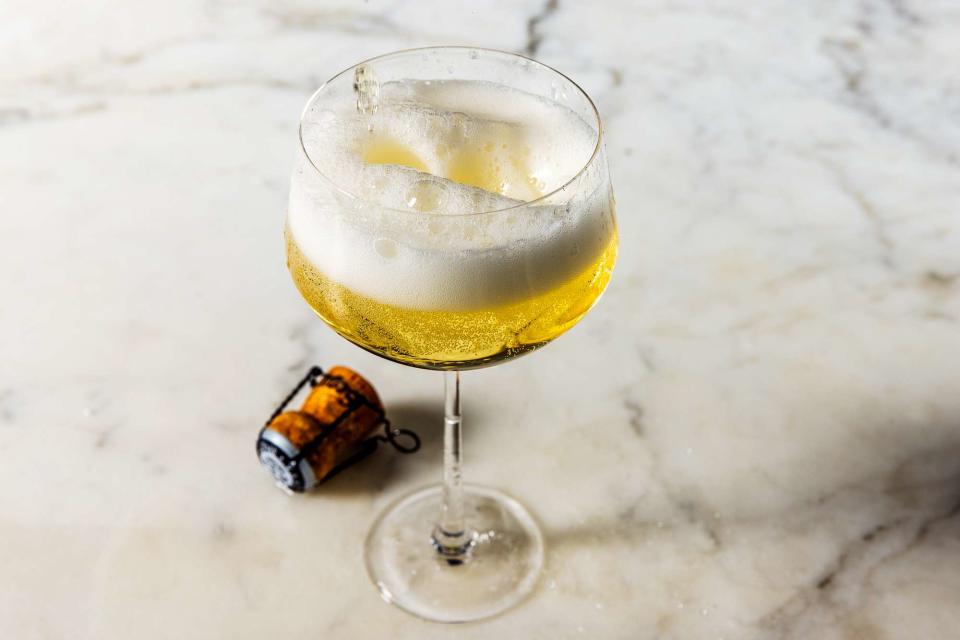Want Bubbles on a Budget? Cava Is Your Answer
Delicious, crisp, and full of value, it's time to stock up on Spanish bubbly.

Matt Taylor-Gross
The world of sparkling wine can be a confusing place. For many, the term Champagne is used to refer to any wine with bubbles, though of course that’s not accurate. Prosecco dominates the conversation when it turns to bubbly from Italy, but Franciacorta and Lambrusco are also more than worth your time and a slice of your wine budget. ‘American Champagne’ isn’t technically a thing at all, despite the fact that the phrase is still commonly used; Champagne must come from the Champagne region of France.
But it’s with Cava that the most confusion seems to reign. Aside from a vague notion that it hails from Spain, there’s just not all that much of a detailed understanding of where in the country it hits its peak, what grapes are transformed into it, and how those bubbles get into the liquid in the first place.
This is a shame, because Cava has undergone a serious renaissance over the past decade or so, and today, the best examples of it represent some of the most exciting values in the world of fizzy.
Where Does Cava Come From?
To start at the beginning, Cava is a legally defined Designation of Origin, or D.O., for sparkling wine in Spain. The vast majority of it (around 95%) is produced in Catalonia, and centered in Sant Sadurní d’Anoia. Outside of Catalonia, according to the region’s trade group, it “is only produced in 23 towns in La Rioja, two in Aragón, one in Valencia, and another in Extremadura.” Much of what makes it to the American market, however, will be from Catalonia.
How Is Cava Made?
Unlike Prosecco, which Cava is often (and not terribly accurately) compared to, and which gets its bubbles through the Charmat Method, Cava undergoes the same in-bottle secondary fermentation that Champagne does. In other words, after the grapes have been picked, crushed, and fermented, and the final blend has been settled on, every individual bottle is ushered through a secondary fermentation. Since the bottle is sealed (not with a cork at this stage, but most frequently with a crown cap that resembles the one on your favorite beer), the carbon dioxide that the yeast produces alongside alcohol dissolves into the liquid. Bubbly is born!
But the process isn’t done quite yet. Eventually, the yeast will die and sink. The wine, according to Cava requirements, must rest in contact with that spent yeast (the ‘lees’) for at least nine months to be labeled Cava de Guarda. During this time, the wine takes on a sense of depth and complexity that it otherwise would not have, gaining savory notes that are often compared to those you’d smell in a bakery. (These also will continue to evolve as the Cava ages, lending more mature bottles an unforgettable depth.)
There are, however, other categories of Cava that require longer aging on the lees: Cava de Guarda Reserva Superior benefits from 18 months on the lees, Cava de Guarda Superior Gran Reserva starts at 30 months, and estate-bottled expressions, classified as Cava de Guarda Superior de Paraje Calificado, cannot be aged for any less than three full years on the lees.
No matter which classification it ultimately receives, each bottle will eventually be individually disgorged—that is, using the pent-up pressure to shoot out the plug of spent yeast—before being topped up and sealed with the more familiar cork and cage that the majority of them leave the winery with.
Yet for all of this work, and all of the time and money required, excellent Cava can be found for often stunningly low prices…often around $20 for a delicious one. Of course, the longer-lees-aged and single-vineyard ones climb in price, but the fact remains that delicious Cava can be a serious value.
What Grape Varieties Are Used to Make Cava?
Because the grape varieties for Cava are different from the ones used in Champagne — in this case, Macabeo, Parellada, and Xarello dominate, though some producers use a bit of Grenache (known as Garnacha) and Monastrell, as well as the Chardonnay and Pinot Noir familiar to fans of Champagne — it tastes quite different. In addition, the terroir is not the same as it is in Champagne. Most Cava is produced in Catalonia, where soils and climate set it apart from its famous French counterpart. In general, Cava boasts an earthy, savory core around which other notes of hard autumn orchard fruit and citrus can be discerned.
What Does Cava Taste Like?
With its telltale notes of bright citrus, crunchy orchard fruit, and spine of minerality, and the more savory, occasionally yeasty notes that its lees aging imparts, Cava is a great option for aperitifs, for pairing with salty and fried foods, and even alongside simple pasta preparations. It takes well to moderate spice heat, and works with a broad range of cuisines. Given its generally reasonable prices, its food-friendliness, and its increasing ubiquity on the American market, it’s no wonder that Cava is gaining in popularity here.
No matter which bubbly you choose to open — Champagne, Prosecco, Cava, or something else entirely — sparkling wine is often just what you need to celebrate a special occasion, mark a milestone, or simply pair with brunch or dinner.

